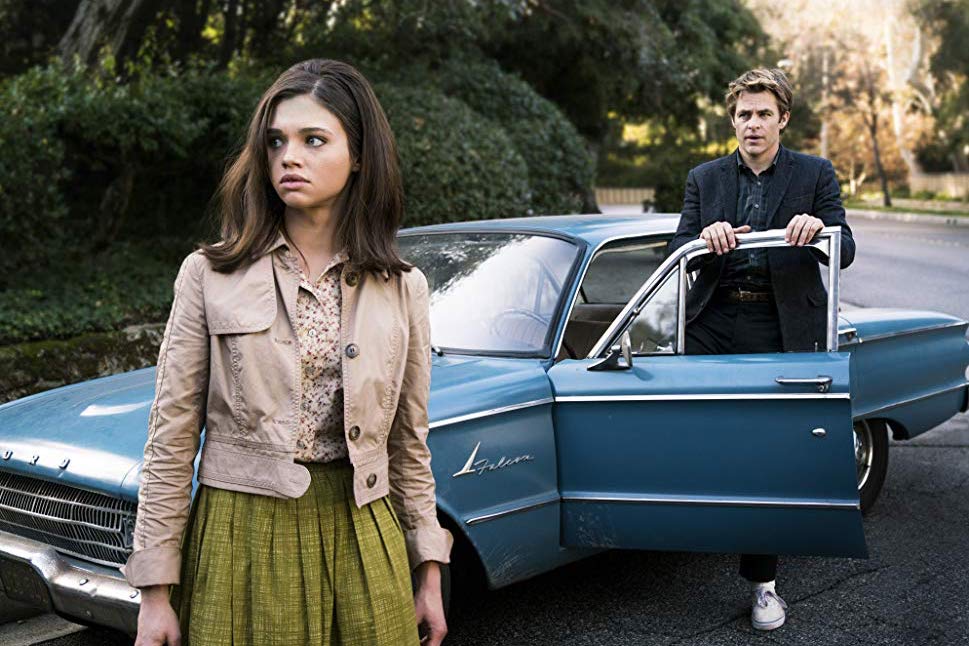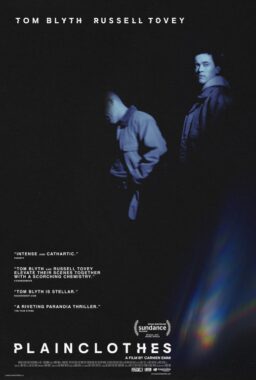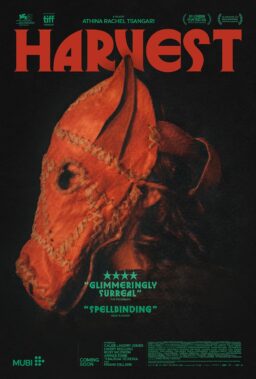A Reno, Nevada high school girl with grey eyes lives teeters on the border between black and white, girlhood and womanhood. Her mother is black, but she is light-skinned and has hair that curls, but isn’t kinky. Fauna Hodel (India Eisley) has eyes for a dark-skinned boy named Lewis whom her mother claims is no good or, at least, not good enough. A new girl at school almost sits beside Fauna at lunch but this is the 1940s. Other white girls tell the stranger, “that’s the negro table” and she moves. An innocent walk home after work underlines how the world sees Fauna and Lewis. Two white police officers ask if she’s okay and seem ready to do something brutal to the young man, but she saves him by telling them that she is black.
When she learns the truth about herself, she makes a fateful phone call to a Doctor George Hodel (Jefferson Mays). He invites her to Los Angeles. Fleeing a drunken mother, and hopeful that her grandfather will provide some answers about who she is, she boards a Greyhound bus, wanting to kiss Lewis (Dabier) goodbye, but he turns his head away.
In Los Angeles, a white man (Chris Pine) strides on to a beach with mismatched print aloha shirt and swim trunks. Other beach goers cackle at his white socks and shoes. This is a man on a mission: He’s a reporter taking photos of someone who wanted to be famous and now will be ruin. She chases him although the man she’s with does nothing. Attempting to wrest the camera from him, she tears his shirt.
<span class="s1" The reporter, Jay Singletary, should be happy, but he’s miserable. He calls his editor from a phone booth and pretends he didn’t get the shot, but no one finds if funny. He takes his rage out on the telephone before finding refuge in his car where he snorts cocaine.
His next assignment takes him to the morgue. A woman’s body has been found badly mutilated. He’s horrified by what he finds and then, he’s laughs hysterically when he first hides inside the plays where dead bodies are stored and finds himself then locked in and surrounded by trays of dead bodies. Discovered, he’s hauled out and beaten by police officers before being thrown in the back of a police car where a young black man, already beaten, is sitting.
If you’re in Los Angeles, you’ve probably heard of the January 1947 Black Dahlia murder and if you’re a true murder fan, you will be familiar with the name George Hodel. He was one of the prime suspects in that murder, a gynecologist who led a questionable lifestyle and conveniently left the US when the police were ready to arrest him.
“I Am the Night” is a six-episode limited television series schedule to air on TNT in January. The series is based on the book the late Fauna Hodel wrote with J.R. Biramonte in 2008: “One Day She’ll Darken: The Mysterious Beginnings of Fauna Hodel.” Hodel died last year of cancer, but is listed as one of the writers of the series along with Sam Sheridan and Monica Beletsky (one episode). Sheridan and Patty Jenkins are, along with Chris Pine, executive producers of this series which reunited Pine with his Wonder Woman director. Jenkins directed three episodes, Victoria Mahoney (“American Crime” and “Grey’s Anatomy”), two and Carl Franklin (“Mindhunter”) one.
“I Am the Night” has some of the stylistic feel of “Mindhunter,” but that Netflix series focuses on law enforcement’s viewpoint from an intellectual point of view. “I Am the Night” plunges us into the scrappy existence of people on the wrong side of the tracks who might find themselves misunderstood or harassed by the law. There’s a fearful intelligence and stubborn innocence in Eisley’s portrayal of the Fauna. She knows something is wrong with her mother, but she can’t take warning about her grandfather to heart. Pine’s good reporter turned into a hack by addiction is a gleefully dissolute character filled with sweaty desperation.
The first episode of “I Am the Night” does its job, intriguing you with a lurid situation. The title sequence suggests that one of the characters may not survive the encounter and the small short snippet we see of the bad doctor indicates there will be a titillation factor—that’s sure to increase when we see more of the doctor. We already know how life ends for Black Dahlia, but we don’t know just how Fauna got to know her grandfather. It is clear that not all grandfathers are to be trusted.












